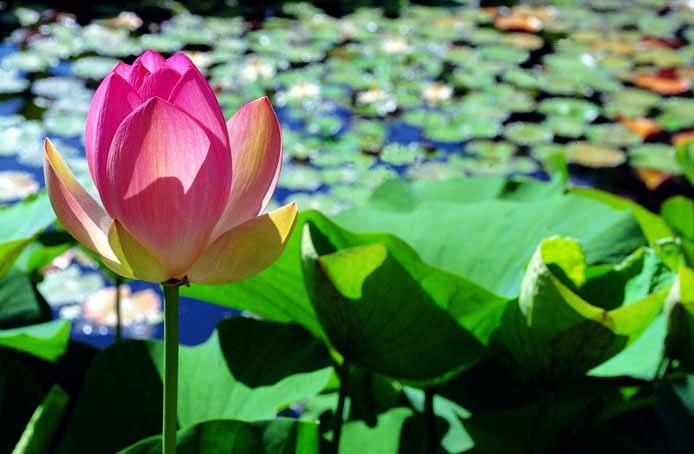4th Jun 2021
Now that we're getting some properly hotter weather that's set to Continue for Some Time green water problems are likely to become an issue for many.
As we move towards the hotter summer months you of course want your pond to look its best and to be a happy healthy environment for your fish. However at these warmer times of year you may find that your pond can take on a distinct tinge of green or may even begin to look like the proverbial pea soup.
This nasty and unsightly effect is caused by algae. As well as decreasing visibility in your pond and preventing you from enjoying the full natural beauty and lush colouring of your resident koi or other pond dwellers, algae will also deplete oxygen and potentially affect the health of your fish. Thankfully with a little bit of time and effort algae in all its forms can be all but banished, or at the very least effectively managed.
The first thing to do is to know your enemy! There are two main types of algae; Suspended Algae and Blanket Weed Algae (often commonly referred to simply as Blanketweed). Suspended algae is as the name suggests – a film of green algae suspended in the water. Blanketweed on the other hand develops into long fibrous strands which will cling to pond edges, waterfalls and even other pond plants.
Algae is such a big problem because it is particularly efficient at making the most of available conditions to reproduce rapidly. The process is basically as follows; algae flourish through a process of Photosynthesis, that combines water with carbon dioxide to form sugars that are used or stored for energy and growth. Algae produce oxygen, but at night when there is no sunlight, algae will start to respire (using up the stored sugars and oxygen). This in turn depletes the oxygen reserves in your pond. If the conditions happen to be favourable in your pond (lots of nutrients and plenty of sunlight) then there can be as many as 5 million algae cells per millilitre of pond water.
In the case of blanketweed particular species of algae form into strings and filaments, eventually creating dense strands which in certain conditions can actually double their mass within 24 hours. Blanketweed is an unsightly nuisance which often needs to be removed manually using special Brushes, Nets or even by hand. If you don’t fancy getting stuck in and getting your hands too dirty though, there are some extremely effective Blanketweed Treatments available also.
Effective water treatment solutions are also available for dealing with Suspended Algae and Green Water. Water treatments are a good option when an algae problem has already occurred. These treatments will get rid of the problem but only for a period of time. It will be necessary to top up your treatments at regular intervals (follow manufacturers guidelines) to keep algae at bay.
UV Clarifiers
UV (Ultraviolet) Clarifiers can be extremely effective in controlling suspended algae. They work by exposing the suspended algae cells to very high levels of UV light which has the effect of destroying their ability to reproduce. The light will also kill the existing algae cells and cause them to clump together. These clumps are then large enough to be removed by a Filter System. Basically water enters through a clarifier’s inlet and travels all around the UV light, which causes the suspended algae to clump. The water containing these clumps then travels through your mechanical and/or biological filter (which removes the clumps) and exits the system as clear water.
It’s important to remember that UV light is harmful to the human eye. For this reason UV clarifiers usually consist of a fluorescent UV emitting bulb encased in a darker opaque housing or sleeve. Be sure to follow the manufacturer’s safety guidelines supplied with the product.
Plants
The best way to keep your pond clear of green water on a long term to permanent basis is to try to mimic as much as possible what would be found in nature. In natural environments plants absorb the nutrients produced for them by fish, so there is little left for algae. In a garden pond there is often insufficient plant life to achieve this natural balance. Whether you are just starting out with developing your pond and want to avoid potential algae issues or you already have an algae problem, Adding Plants is definitely a great idea!
Floating plants such as Lilies or Marginals like Flag Iris are easy to plant and maintain and will help regulate the pond environment and provide some shade, reducing the amount of sunlight reaching the pond, helping to control algae growth even further. You can also add submerged oxygenating plants but these are not the solution on their own.
In Conclusion
No pond is likely to be 100% free from algae but a balanced environment will effectively keep it at bay. Use an appropriate treatment for the type of algae present and make use of UV clarifiers for suspended algae - and pond nets, brushes etc. to remove established blanketweed. Mother Nature often gives the best pointers for dealing with such situations however, so in the long run you should seriously consider making plants a permanent addition to your pond space.



